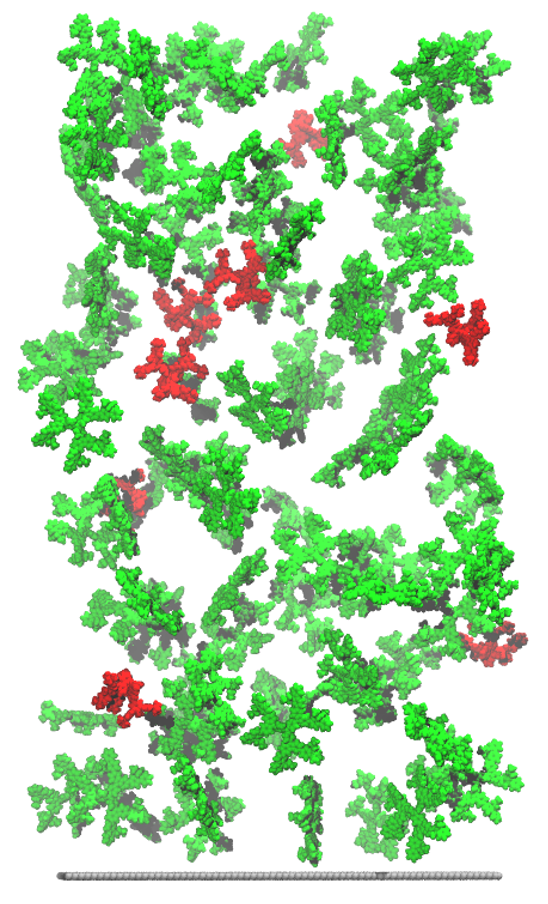This research highlight was originally published in NCI's 2021-2022 Annual Report.
Organic semiconductors are new materials generating significant excitement among researchers and industry. They are low-cost, lightweight and often mechanically flexible, and have already become key components in lighting, solar cell and micro-circuitry products. However, to fully realise the potential of these materials, it will be necessary to improve the efficiency of their manufacture and develop a better understanding for how arrangements at the nanoscale affect their performance.
As part of his 2021 Australasian Leadership Computing Grant, Professor Alan E. Mark from The University of Queensland ran atomic simulations at NCI to model the manufacture and performance of organic semiconductor materials. The work he and his team have undertaken has helped clarify the cause and mechanism underlying commonly observed issues, including how the performance of organic light emitting diodes (OLEDs) are impacted by the presence of water or oxygen.
OLEDs consist of many layers, including a cathode, an anode and an ‘emission layer’, the layer that emits light. It has long been observed that even a tiny amount of water can significantly impact the performance of an OLED, with some scientists speculating this may be due to effects on either the cathode or anode layers. By running computationally intensive models simulating a drop of water placed on an OLED, Professor Mark and team have helped clarify matters, demonstrating that water molecules are actually directly interacting with the OLED’s emission layer.

“What we see is that while the OLED layers appear impervious, if a drop of water is placed on top, water molecules will gradually work their way in,” says Professor Mark. “We used much of our time on the Gadi supercomputer to investigate how the water diffuses through the various layers. While there have been suggestions regarding how water may affect these materials, we showed for the first time how water manages to get in and move through what is effectively a solid material.”
In the simulations, the water ‘likes’ to be within the emission layer, spontaneously binding to the emitter molecules. This changes the electronic structure and prevents these molecules from emitting light. This knowledge is needed to develop engineering approaches to minimise these effects. “People had been proposing that you may need to make the outer layers of the OLED more waterproof. Our research shows that an alternative may be to chemically modify the emitter itself so that water does not bind to the emitter.”
The models developed by Professor Mark and his team are delivering insights to industry that would not be possible through physical experiments alone. These computational approaches, enabled by the analytical power of NCI’s Gadi supercomputer, are revealing how the nanoscale structure of organic semiconductor materials affects their properties and manufacture, and laying the foundation for the next advances in manufacturing.